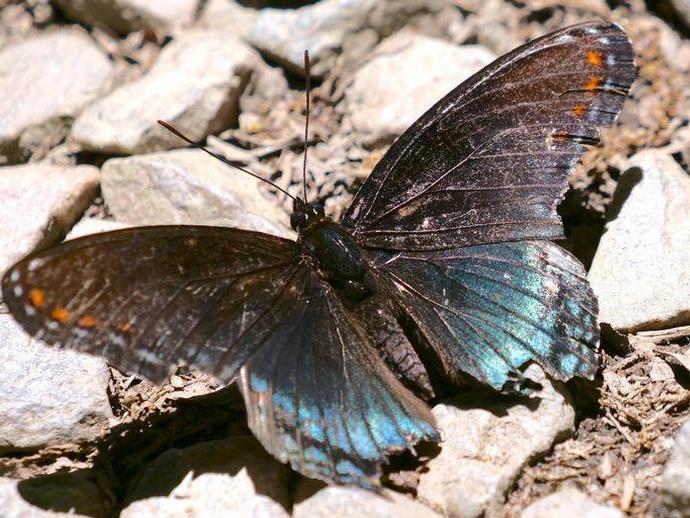May 17, 2021
It's time for today's edition of #BenInNature presented by our friends at Carter Bank & Trust!
Here's an interesting find from my recent trip to Phinizy Swamp Nature Park in Augusta, Georgia. When I first saw this butterfly, I almost didn't snap a picture of it; I assumed it was just a black morph of a female eastern tiger swallowtail butterfly (Papilio glaucus), which are pretty easy to find. However, upon closer examination, I realized that this little guy is something else entirely, and while it's not uncommon, it's a pretty unusual critter!
This is Limenitis arthemis, better known as the red-spotted purple ... unless you find one up north, in which case it's called a white admiral and looks completely different. That may seem pretty strange, but it's an excellent (and long-studied) example of evolution at work!
In the northern part of their range, which mostly consists of Canada and parts of the northern U.S., these butterflies are known as white admirals, and they're black with a thick white band running along their wings. In the southern part of their range, which consists of a large chunk of the southeastern U.S., they look like the pictured butterfly; their wings are black with blue and orange highlights.
The different coloration in the south is a prime example of Batesian mimicry, a form of mimicry in which a harmless species evolves to resemble a harmful species. In this case, these butterflies have evolved to superficially resemble the pipevine swallowtail (Battus philenor), which are poisonous to predators!
So why hasn't the northern population of Limenitis arthemis evolved to look like the pipevine swallowtail? Easy: the pipevine swallowtail's range doesn't extend far into the north, so there was never any pressure for Limenitis arthemis to evolve to resemble it, since any northern predators wouldn't recognize the pipevine swallowtail, much less a mimic.
If you'd like to see one of these butterflies for yourself, keep an eye peeled near deciduous forests and in shady areas on the periphery of forests; you might just spot one fluttering along.
ABOUT #BenInNature
Social distancing can be difficult, but it presents a great opportunity to become reacquainted with nature. In this series of posts, Administrator of Science Ben Williams ventures outdoors to record a snapshot of the unique sights that can be found in the natural world. New updates are posted Monday - Friday, with previous posts highlighted on the weekends. This series of posts is made possible thanks to the support of VMNH Corporate Partner Carter Bank & Trust (www.cbtcares.com).
NATURE PHOTO IDENTIFICATIONS
If you discover something in nature that you would like help identifying, be sure to message us right here on Facebook with a picture (please include location and date of picture) and we'll have our experts help you identify it!

 Hours & Admissions
Hours & Admissions Directions
Directions

